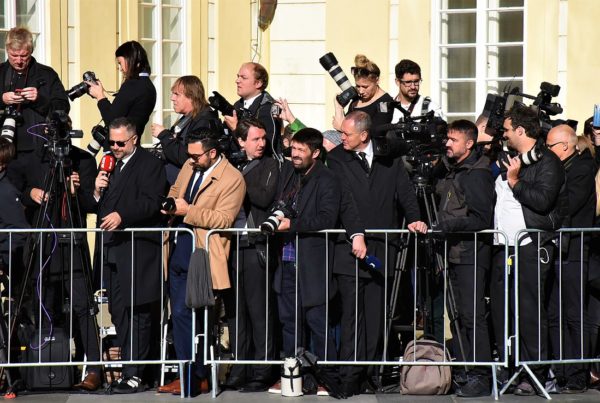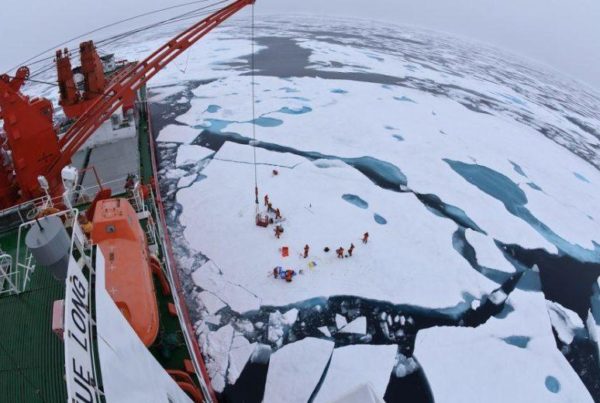(Originally published May 4, 2016) CDA Institute Research Manager and Senior Editor David McDonough wrote an op-ed in iPolitics exploring the prospect for Canadian participation in missile defence, based on his recently released Vimy Paper.
As part of its long-promised defence policy review, the federal government is reviewing Canada’s 2005 decision to opt out of continental ballistic missile defence. Change of heart? Or red herring?
Either way, it’s a good time to revisit the debate about Canada’s potential role in missile defence. First, let’s start by putting an end to one scare tactic — the notion that the future of the North American Aerospace Defence command (NORAD) would be somehow jeopardized without BMD. Given the importance of airspace warning and control after 9/11,NORAD is here to stay.
But that doesn’t mean NORAD’s current mission (aerospace warning, airspace control and maritime warning) is necessarily secure. In 2004, Canada’s agreement to allow NORAD’s early warning functions to be used in BMD helped to safeguard its role in ballistic missile warning. NORAD is no longer alone here, however; a number of new fixed and mobile X-band radar assets provide tracking and cueing capabilities for a range of BMD systems, not all of which are linked to NORAD. If Washington ever chose another conduit for early warning, one of the binational command’s key missions would come to a halt.
Canada’s refusal to participate in missile defence also has created a curious anomaly, given that key allies in NATO, the Asia-Pacific and elsewhere have moved quickly to develop and deploy BMD alongside the United States. This is especially true in NATO, which is planning to deploy an operational system capable of defending both deployed military forces and European cities.
In effect, Canada accepted the logic of BMD for its allies in Europe — but not for North America. That makes Canada’s position anomalous, to say the least. It also raises the question of whether Ottawa should seek some sort of protection from ballistic missile attack.
Many people assume — falsely — that Canada would be protected from a missile attack by America’s BMD system. That system, however, can now better identify a missile’s trajectory and determine if its target is Canadian or American before it hits.
Simply offering the use of current Canadian personnel at NORAD might offer a fig leaf of involvement in BMD, but it probably won’t be enough to ensure Canadian cities are actually being protected. Interception opportunities are limited, as are the bullets in the BMD gun; the number of U.S. interceptors is only expected to hit 44 by 2017. As its warhead tracking capabilities improve, the Americans increasingly may face a choice between protecting a Canadian city and an American one. No points for guessing which one they’d choose.
But it may be difficult for Canada to secure participation and protection in a BMD system now — without a quid pro quo, at least. The U.S. always has been reluctant to give Canada either a guarantee of BMD protection or a say in the intercept planning process that decides which cities get protection. In 2004 and 2005, for example, U.S. negotiators showed little interest in giving Canada a voice in drafting the interception algorithm.
In other words, simply offering the use of current Canadian personnel at NORAD might offer a fig leaf of involvement inBMD, but it probably won’t be enough to ensure Canadian cities are actually being protected. Canada will need to do more — to provide an ‘asymmetrical’ or ‘in-kind’ contribution.
One idea making the rounds is to volunteer a site at Goose Bay, Newfoundland for X-band tracking and cueing radar. That would fill an important gap in radar coverage for tracking something launched out of Iran; continental BMD is designed to shoot down a North Korean missile. It would be particularly useful if the United States chooses to build a third interceptor site on its east coast.
Another proposal is to establish continental surveillance radar in the Canadian Arctic capable of tracking aircraft, maritime vessels and cruise/ballistic missiles. American military officials have shown interest in having multi-purpose sensors in the Arctic, and such assets would have the advantage of replacing the aging North Warning System (NWS) radar line.
A third idea is to skip the land-based proposals altogether and make our contribution in space. By deploying a satellite that could be linked to U.S. space-based BMD sensors, Canada could support missile defence interceptions beyond North America and be in a better position to pursue cooperation with the Americans on military space.
None of these proposals would come cheap. Any Canadian contribution to BMD also could entail opportunity costs. Money spent on a Goose Bay radar site, for example, reduces the already limited funds for recapitalizing the Canadian Forces. Still, the benefits of participation could outweigh the costs and trade-offs.
Much depends on what the U.S. expects of a Canadian in-kind contribution to BMD. The only way to find out is for Canada to start talking with the Americans. The United States has indicated it wants to see proof of definite interest on Ottawa’s part before releasing such information — while Canada has been loathe to send any premature signals that it intends to sign up.
Still, it’s time to assess our options and start the discussions with Washington on missile defence — at least to see where such a dance may ultimately lead.
This article is based on the author’s Vimy Paper “Canada, NORAD and Missile Defence: Prospects for Canadian Participation” that explores in detail Canada’s participation in ballistic missile defence. To read the full report click here.
Dr. David S. McDonough is Research Manager and Senior Editor at the CDA Institute, and a research fellow at Dalhousie University’s Centre for Foreign Policy Studies.








